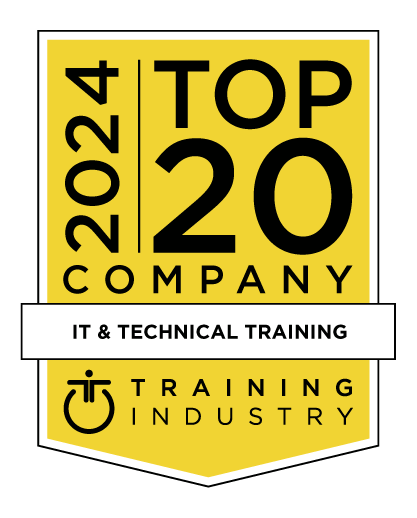title
Please take a moment to fill out this form. We will get back to you as soon as possible.
All fields marked with an asterisk (*) are mandatory.
Teradata Architecture
Course Description
Overview
Objectives
Topics
- The Parsing Engine
- The AMPs
- Born to be parallel
- The BYNET
- A Scalable Architecture
- Logical Modeling – Primary and Foreign Keys
- Physical Modeling - The Primary Index
- Two Types of Primary Indexes (UPI or NUPI)
- Unique Primary Index (UPI)
- Non-Unique Primary Index (NUPI)
- Multi-Column Primary Indexes
- When do you define the Primary Index?
- Defining a Non-Unique Primary Index (NUPI)
- Defining a Multi-Column Primary Index
- How Teradata Distributes and Retrieves Rows
- Hashing the Primary Index Value
- The Hash Map
- An 8-AMP Hash Map Example
- Distributing a Row onto the Proper AMP
- Retrieving a Row by way of the Primary Index
- Hashing Non-Unique Primary Indexes (NUPI)
- Distributing Non-Unique Primary Indexes (NUPI) Rows
- Retrieving (NUPI) Rows
- Distributing Multi-Column Primary Index Rows
- Retrieving Multi-Column Primary Index Rows
- Even Distribution with an UPI
- Uneven Distribution with a NUPI
- Unacceptable Skewed Distribution with a NUPI
- Review – Parsing Engines Plan with an UPI
- Review – Parsing Engines Plan with a NUPI
- Review – Big Trouble – The Full Table Scan
- Big Trouble – A Picture of a Full Table Scan
- Test your Teradata Primary Index Knowledge
- UPI Row-ID Quiz
- NUPI Row-ID Quiz
- The Base Table
- Creating a Unique Secondary Index (USI)
- The Secondary Index Subtable
- Inside the Secondary Index Subtable
- How Teradata builds the Secondary Index Subtable
- USI – Always a Two-AMP Operation
- The Parsing Engines Plan with an USI Query
- Retrieving Base Rows using the USI
- Picture that USI in Action
- USI Summary
- USI Pictorial using the Hash Maps
- USI Secondary Index Quiz
- USI Secondary and Primary Index Quiz Answers
- A Full Table Scan Example
- Creating a Non-Unique Secondary Index (NUSI)
- Columns inside a NUSI Secondary Index Subtable
- NUSI Subtable is AMP-Local
- A Query using the NUSI Column
- NUSI Recap
- Secondary Index Summary
- Test Your Teradata Access Query Knowledge
- An Incredible Quiz Opportunity
- A Table used for our Partitioning Example
- Range Queries
- Why we had to perform a Full Table Scan
- A Partitioned Table
- One Year of Orders Partitioned
- Fundamentals of Partitioning
- Add the Partition to the Row-ID for the Row Key
- You Partition a Table when you CREATE the Table
- RANGE_N Partitioning by Week
- RANGE_N Partitioning Older and Newer Data
- Case_N Partitioning
- Multi-Level Partitioning
- Partitioning Rules
- See the data
- Test your Teradata Access Knowledge
- The most Powerful USER
- DBC owns all the Original Disk Space
- DBC Example of 1000 GBs
- DBC will first CREATE a USER or a DATABASE
- Teradata is Hierarchical
- Only two Objects can Receive PERM Space
- Only difference between a User and a Database
- A Typical approach to Security
- Example of a DATABASE and USER Interchanged
- PERM and SPOOL Space
- Each AMP will have PERM and SPOOL
- A Query using both PERM and SPOOL Space
- Spool is Deleted when the Query is Done
- Getting a better understanding of Spool
- Answering the MRKT Spool Query Answer
- Spool is like a Speed Limit
- All Space is calculated on a Per AMP Basis
- Examples of Perm and Spool on a Per AMP Basis
- Quiz on Perm and Spool Space
- Answers to Quiz on Perm and Spool Space
- Parsing Engine uses Statistics for the Plan
- Columns and Indexes to Collect Statistics On
- Syntax to Collect Statistics
- Recollecting Statistics
- Random Sample instead of Collected Statistics
- V12 Statistics Enhancement – Stale Statistics
- Where Statistics are Stored in DBC
- A Collect Statistics Example
- What Statistics are Really Collected
- Loner Values and High Bias Intervals
- Sample Statistics
- Extrapolated Statistics
- Teradata Limits
- Transaction Concept
- Two Modes to Teradata
- Differences between ANSI and Teradata Mode
- ANSI Mode Commit
- Teradata Mode Commit also called BTET
- Trick to CREATE a Multi-Statement with BTEQ
- Transient Journal
- How the Transient Journal Works
- The Transient Journal after a Commit
- VProcs
- Nodes and MPP
- RAID 1 - Mirroring
- Cliques
- VProcs Migrate when a Node Fails
- Cliques – An 8-Node Example
- Hot Standby Nodes
- Hot Standby Nodes in Action
- FALLBACK Protection
- How Fallback Works
- Fallback Clusters
- Fallback Clusters Exercise
- Fallback – Performance Vs Protection Quiz
- The Six Rules of Fallback
- Cliques and Clusters
- Down AMP Recovery Journal (DARJ)
- Write Ahead Logging (WAL)
- Permanent Journal
- Table create with Fallback and Permanent Journal
- Permanent Journal Rules
- Some Permanent Journal Possibilities
- Creating a Permanent Journal
- Create Table Examples with Permanent Journals
- Each Permanent Journal is made up of 3 Areas
- Permanent Journal Rules
- Teradata Virtual Storage (New V13)
- The Four Locks of Teradata
- Teradata has 3 levels of Locking
- Quiz – Which Level of Locking is Occurring?
- The Teradata Lock Manager
- Locking Modifiers – The Access Lock
- Locks and their compatibility
- Moving Through the Locking Queue
- Quiz – Which Locks Move Up?
- A Single AMP Acts as the Locking Gatekeeper
- Every AMP performs Locking Gatekeeper Duties
- Explains – The Pseudo Table for Locks
- The NOWAIT Locking Option
- Rules of Teradata Locking
- Explains – Psuedo Tables
- Explain – Full Table Scan
- Explain – Primary Index Reads
- Explain – Secondary Index Read
- Explain - View DDL of a Partitioned Table
- Explain – Partition Elimination
- Explain – Joins with Duplication on all AMPs
- Explain – Joins with Redistribution
- Explain – Bit Mapping with multiple NUSIs
- Explain – How to Recognize a Product Join
- Fundamentals of Teradata Joins
- A Join Example
- Joins and the Primary Index
- Redistributing Rows in Spool
- Redistributing Rows of Both Tables
- Duplicating the Smaller Table
- Quiz – How Many Rows are in Spool?
- Quiz Answer – How Many Rows in Spool?
- How Duplication Appears on Every AMP
- How Many Rows in Spool with Redistribution?
- Answer to How Many Rows in Spool
- An Example of an AMP with Redistribution
- Derived Tables
- A Query Pictorial Example with a Derived Table
- Volatile Tables
- How to populate a Volatile Table
- Global Temporary Tables
- A Pictorial of a Global Temporary Table
- What happens to Global Tables at Session End?
- Global Temp Tables and Temp Space
- NoPI CREATE Statements
- The Purpose of a NoPI Table
- NoPI Increments the Uniqueness Value in the ROWID
- NoPI Row Hash is different on each AMP
- NoPI Options and Facts
- NoPI Restrictions
- AMPs have FSG Cache for Memory Speed
- An Example of an UPDATE Statement
- AMP Local WALs
- AMPs UPDATE rows in FSG Cache
- Write to WAL and then Write to Disk
- The WAL Depot
- Clearing out the WAL Log and WAL Depot
- AMPs in the 1980’s
- AMPs in the 1990’s
- Data Blocks and Cylinders make up a Disk
- Cylinders are dedicated to PERM, SPOOL, Etc.
- Outside Disk Tracks are much faster
- AMPs assigned Disk Cylinders not entire disks
- Hot, Warm, and Cold Data
- The old way Teradata had to add Disk Space
- Doubling the Disk Capacity
- Incremental Disk Growth is here
- Mixed Disks and Solid State Drives
- Solid State Drives are like Giant Flash Drives
- Virtual Storage Metrics
- The Two Modes of Teradata TVS
Related Courses
-
Teradata Database Administration
CFLQ-125- Duration: 3 Days
- Delivery Format: Classroom Training, Online Training
- Price: 2,295.00 USD
Self-Paced Training Info
Learn at your own pace with anytime, anywhere training
- Same in-demand topics as instructor-led public and private classes.
- Standalone learning or supplemental reinforcement.
- e-Learning content varies by course and technology.
- View the Self-Paced version of this outline and what is included in the SPVC course.
- Learn more about e-Learning
Course Added To Shopping Cart
bla
bla
bla
bla
bla
bla
Self-Paced Training Terms & Conditions
Exam Terms & Conditions
Sorry, there are no classes that meet your criteria.
Please contact us to schedule a class.

STOP! Before You Leave
Save 0% on this course!
Take advantage of our online-only offer & save 0% on any course !
Promo Code skip0 will be applied to your registration
Purchase Information
title
Please take a moment to fill out this form. We will get back to you as soon as possible.
All fields marked with an asterisk (*) are mandatory.










